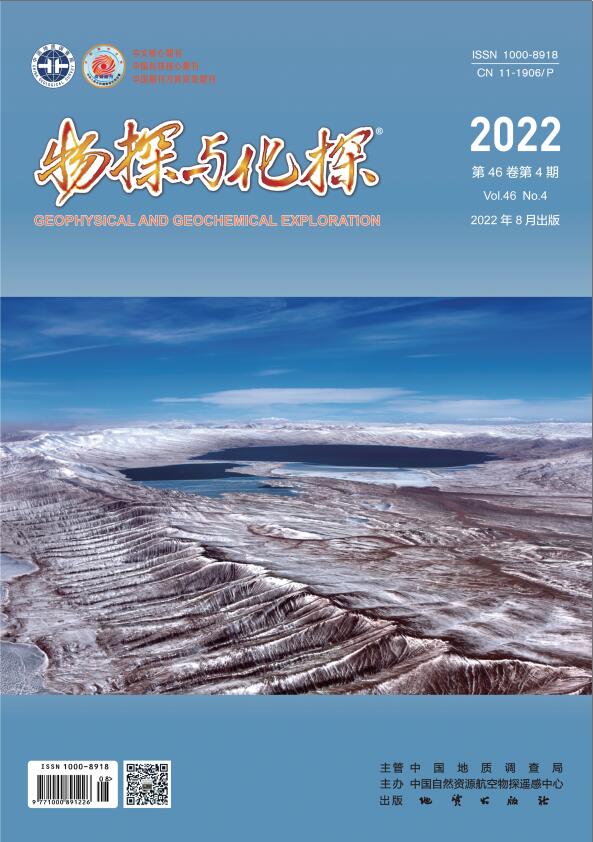| [1] |
Luoma S N. Bioavailability of trace metals to aquatic organisms—A review[J]. Science of the Total Environment, 1983, 28(1):1-22.
Google Scholar
|
| [2] |
Sturm T W. Mobilization and fate of inorganic contaminants due to resuspension of cohesive sediments[J]. International Journal of Urology, 1996, 13(5):659-661.
Google Scholar
|
| [3] |
Zhung Y, Allen H E, Fu G. Effect of aeration of sediment on cadmium binding[J]. Environmental Toxicology & Chemistry, 2010, 13(5):717-724.
Google Scholar
|
| [4] |
王书锦, 刘云根, 王妍, 等. 洱海入湖河口湿地干湿季沉积物氮、磷、有机质垂向分布特征及污染风险差异性[J]. 环境科学, 2016, 37(12):4615-4625.
Google Scholar
|
| [5] |
Wang S J, Liu Y G, Wang Y, et al. Vertical distribution and pollution risk assessment of nitrogen,phosphorus,and organic matter in sediment of inflowing rivers of Erhai Lake estuarine wetland in wet and dry seasons[J]. Environmental Science, 2016, 37(12):4615-4625.
Google Scholar
|
| [6] |
王莉君, 吴思麟. 南京黑臭河道底泥污染特性及评价[J]. 科学技术与工程, 2018, 18(3):117-122.
Google Scholar
|
| [7] |
Wang L J, Wu S L. Pollution characteristics and contamination assessment of sediment from black-odor rivers in Nanjing City[J]. Science Technology and Engineering, 2018, 18(3):117-122.
Google Scholar
|
| [8] |
易文利. 宝鸡千河底泥营养盐及重金属风险评价[J]. 四川环境, 2018, 37(2):151-155.
Google Scholar
|
| [9] |
Yi W L. Risk assessment of heavy metals and nutrients in sediments of the Qianhe River in Baoji[J]. Sichuan Environment, 2018, 37(2):151-155.
Google Scholar
|
| [10] |
邬明鹏. 聚苯并噁嗪界面性质的调控及其对水中重金属离子Cr(Ⅵ)的脱除性能研究[D]. 武汉: 华中农业大学, 2018.
Google Scholar
|
| [11] |
Wu M P. Regulation of interfacial properties of polybenzoxazine for removing heavy metal ion Cr(VI) from aqueous solution[D]. Wuhan: Huazhong Agricultural University, 2018.
Google Scholar
|
| [12] |
Tomlinson D L, Wilson J G, Harris C R, et al. Problems in the assessment of heavy metal levels in estuaries and the formation of a pollution index[J]. Helgoländer Meeresunters, 1980(33):566-575.
Google Scholar
|
| [13] |
中国环境监测总站. 中国土壤元素背景值[M]. 北京: 中国环境科学出版社, 1990:94-172.
Google Scholar
|
| [14] |
China National Eenvironmental Monitoring Center. Background values of soil elements in China[M]. Beijing: China Environmental Science Press, 1990:94-172.
Google Scholar
|
| [15] |
贾英, 方明, 吴友军, 等. 上海河流沉积物重金属的污染特征与潜在生态风险[J]. 中国环境科学, 2013, 33(1):147-153.
Google Scholar
|
| [16] |
Jia Y, Fang M, Wu Y J, et al. Pollution characteristics and potential ecological risk of heavy metals in river sediments of Shanghai[J]. China Environmental Science, 2013, 33(1):147-153.
Google Scholar
|
| [17] |
徐争启, 倪师军, 庹先国, 等. 潜在生态危害指数法评价中重金属毒性系数计算[J]. 环境科学与技术, 2008, 31(2):112-115.
Google Scholar
|
| [18] |
Xu Z Q, Ni S J, Tuo X G, et al. Calculation of heavy metals’ toxicity coefficient in the evaluation of potential ecological risk index[J]. Environmental Science and Technology, 2008, 31(2):112-115.
Google Scholar
|
| [19] |
马建华, 韩昌序, 姜玉玲. 潜在生态风险指数法应用中的一些问题[J]. 地理研究, 2020, 39(6):1233-1241.
Google Scholar
|
| [20] |
Ma J H, Han C X, Jiang Y L. Some problems in the application of potential ecological risk index[J]. Geographical Research, 2020, 39(6):1233-1241.
Google Scholar
|
| [21] |
Field L J, MacDonald D D, Norton S B, et al. Evaluating sediment chemistry and toxicity data using logistic regression modeling[J]. Environmental Toxicology and Chemistry, 1999, 18(6):1311-1322.
Google Scholar
|
| [22] |
丁婷婷, 杜士林, 王宏亮, 等. 嘉兴市河网重金属的污染特征及生态风险评价[J]. 环境化学, 2020, 39(2):500-511.
Google Scholar
|
| [23] |
Ding T T, Du S L, Wang H L, et al. Pollution characteristics and ecological risk assessment of heavy metals in Jiaxing River Network,Zhejiang Province,China[J]. Environmental Chemistry, 2020, 39(2):500-511.
Google Scholar
|
| [24] |
王向辉, 张艺杰, 刘又华, 等. 海口市五源河底泥分析评价及资源化利用研究[J]. 海南师范大学学报:自然科学版, 2019, 32(2):221-226.
Google Scholar
|
| [25] |
Wang X H, Zhang Y J, Liu Y H, et al. Analysis,evaluation and resource utilization of sediments in Wuyuan River of Haikou City[J]. Journal of Hainan Normal University:Natural Science, 2019, 32(2):221-226.
Google Scholar
|
| [26] |
余永琪, 冯松宝. 宿州新汴河底泥重金属分布特征及污染评价[J]. 西部资源, 2018(3):123-124,126.
Google Scholar
|
| [27] |
Yu Y Q, Feng S B. Distribution characteristics and pollution assessment of heavy metals in sediments from Xinbian River in Suzhou City[J]. Western Resources, 2018(3):123-124,126.
Google Scholar
|
| [28] |
王冬莹, 庄涛, 李迎霞, 等. 济南市东泺河底泥及其雨水汇水区地表灰尘中重金属的污染特征研究[J]. 安全与环境学报, 2018, 18(4):1586-1592.
Google Scholar
|
| [29] |
Wang D Y, Zhuang T, Li Y X, et al. Heavy metal pollution features in the sediment and surface dust of the rain-water catchment area of Dongluo river in Jinan City[J]. Journal of Safety and Environment, 2018, 18(4):1586-1592.
Google Scholar
|
| [30] |
石先罗, 章卫. 赣江南昌段沉积物重金属空间分布特征及风险评价[J]. 水利科技与经济, 2017, 23(9):1-5.
Google Scholar
|
| [31] |
Shi X L, Zhang W. Distribution characteristics and potential ecological risk assessment of heavy metals in the Nanchang section of Ganjiang River[J]. Water Conservancy Science and Technology and Economy, 2017, 23(9):1-5.
Google Scholar
|
| [32] |
盛维康, 侯青叶, 杨忠芳, 等. 湘江水系沉积物重金属元素分布特征及风险评价[J]. 中国环境科学, 2019, 39(5):2230-2240.
Google Scholar
|
| [33] |
Sheng W K, Hou Q Y, Yang Z F, et al. Distribution characteristics and ecological risk assessment of heavy metals in sediments from Xiang River[J]. China Environmental Science, 2019, 39(5):2230-2240.
Google Scholar
|
| [34] |
张伯镇, 雷沛, 潘延安, 等. 重庆主城区次级河流表层沉积物重金属污染特征及风险评价[J]. 环境科学学报, 2015, 35(7):2185-2192.
Google Scholar
|
| [35] |
Zhang B Z, Lei P, Pan Y A, et al. Pollution and ecological risk assessment of heavy metals in the surface sediments from the tributaries in the main urban districts,Chongqing City[J]. Acta Scientiae Circumstantiae, 2015, 35(7):2185-2192.
Google Scholar
|
| [36] |
刘薇. 石油化工园区土壤土壤重金属空间分布特征、源解析及污染评价[D]. 乌鲁木齐: 新疆大学, 2017.
Google Scholar
|
| [37] |
Liu W. Spatial distribution characteristics,source analysis and pollution evaluation of heavy metals in soil of petrochemical[D]. Urumqi: Xinjiang University, 2017.
Google Scholar
|
| [38] |
徐争启, 倪师军, 张成江, 等. 应用污染负荷指数法评价攀枝花地区金沙江水系沉积物中的重金属[J]. 四川环境, 2004, 23(3):64-67.
Google Scholar
|
| [39] |
Xu Z Q, Ni S J, Zhang C J, et al. Assessment of heavy metals in sediments from Jinsha River in Panzhihua area by pollution load index[J]. Sichuan Environment, 2004, 23(3):64-67.
Google Scholar
|






 DownLoad:
DownLoad: